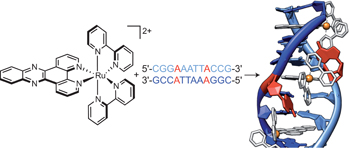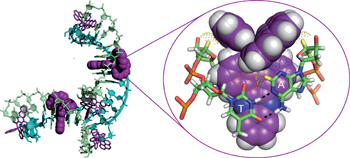Double-helix disruption - p587
doi:10.1038/nchem.1423
Structure by structure, more information is steadily being gathered on how small molecules bind to DNA. A better understanding of the interactions involved in such processes will be crucial for the successful design of compounds for specific diagnostic and therapeutic purposes.
Full Text - Double-helix disruption | PDF (192 KB) - Double-helix disruption
Subject terms: Biochemistry | Inorganic chemistry


